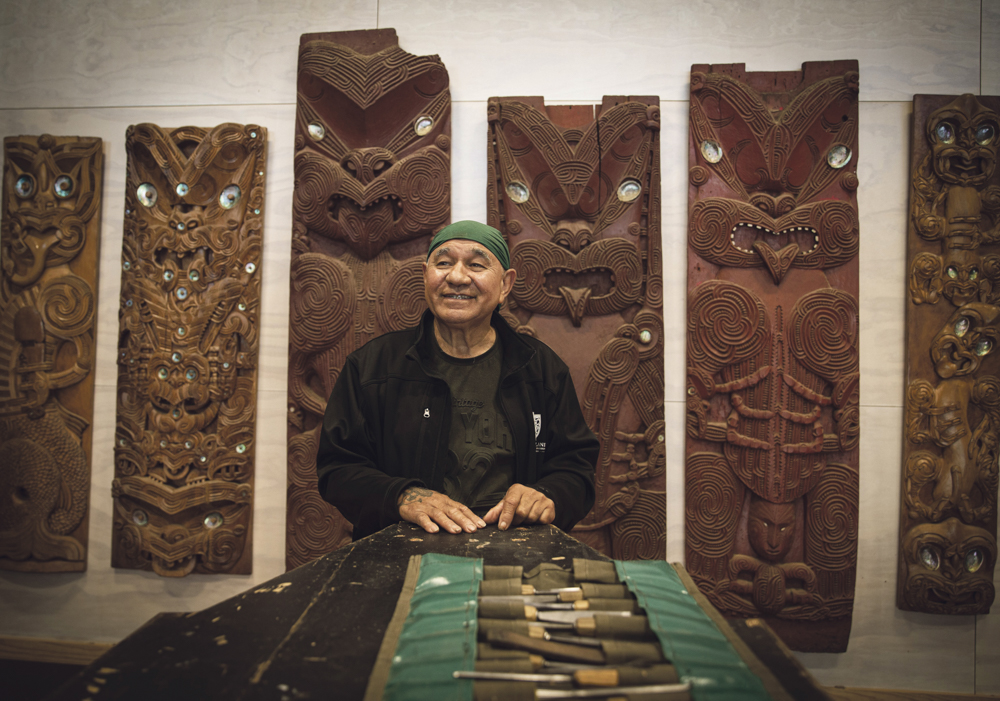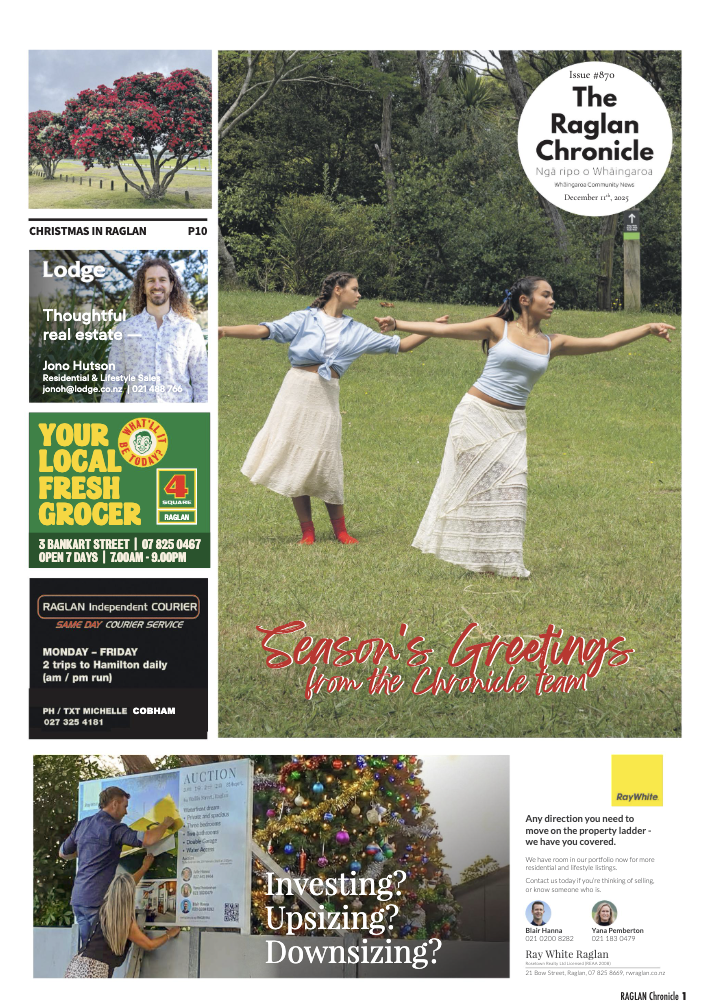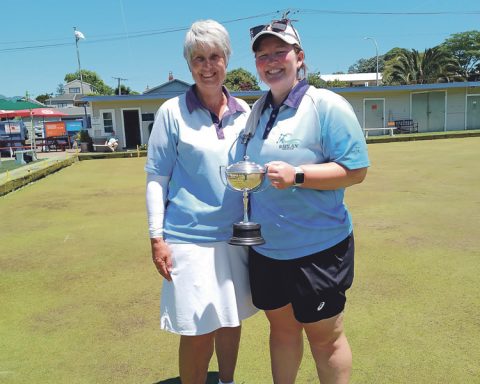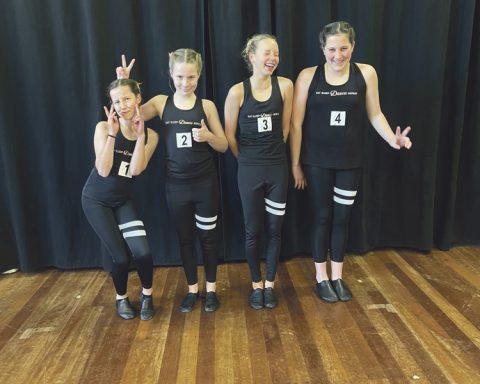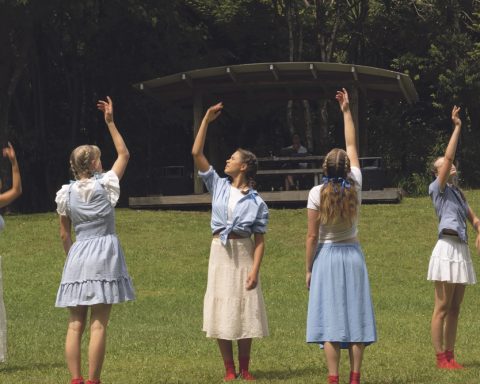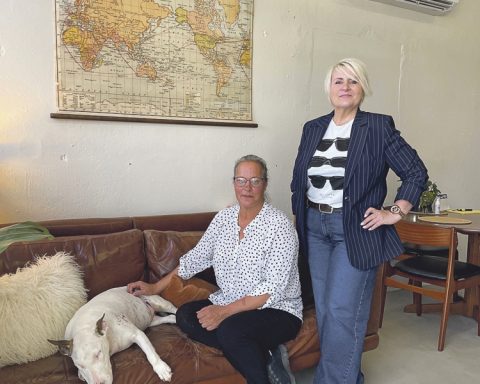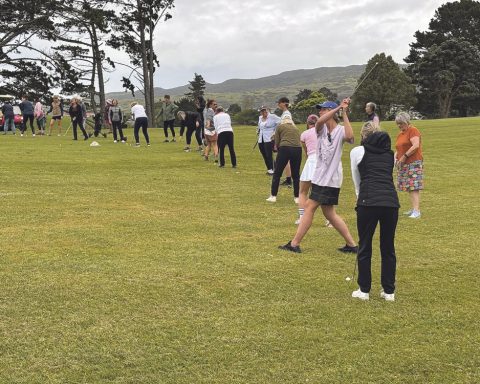Master carver matua James Rickard is hanging up his tools after decades of dedication to sharing his knowledge with his students. Maxine Jacobs reports.
As master carver James Rickard chips away at the wood beneath him, he balances one leg on a rickety stool and the other on the base of the pou he is carving.
His quiet workshop echoes with the rhythmic beat of each strike before he calls his tauira (students) to take over.
“It’s nearly there so you can take that like that and come up higher, and then you can worry about the rest,” he tells them.
The tohunga whakairo (master carver) watches on, offering tips and encouragement to the second and third year students at Rotorua’s Te Puia, the New Zealand Māori Arts and Crafts Institute.
“What’s happening here is that they’re gingerly trying to shape this, and they don’t want to make a mistake, but if they get their feet in the right place, it’ll work.”
After 54 years of mahi and teaching young carvers the craft, he still has time on his last day to have a tutu with them, before he returns home to Raglan to give back to his people.
“I’ve been trying to retire for quite a while now [seven years], but there were always overlapping projects, so I’d start one and get halfway done and start another one,” he laughs.
With a reputation that precedes him, Rickard has dedicated his life to teaching the traditional Māori art form, and has been instrumental in creating hundreds of pieces around the world.
But when his journey first began, carving was the last thing on his 16-year- old mind.
“I had planned on being a pilot,” Rickard says, his heart set on being the second Māori fighter pilot in the air force.
“My mum made me sign this piece of paper, I didn’t know what it was, but she rang me up and said, ‘You got in.’ I was arguing with her, saying, ‘I’m not going in there’, but my dad said, ‘No, you’ll go.’ “
A few years before she died he told her she had made the right call forcing him to join the course’s first cohort in 1967.
“All the parents just wanted to get rid of their sons who were being mischievous, so they sent them here to try and straighten them up.
“[But] at some point in time you realise that you can create. At some point in time you realise, I can retain a person’s history, you realise you can help.
“You suddenly realise, ‘Oh gee,’ you have one of those kinds of moments, but it takes about 20 years,” he laughs.
Rickard’s life has taken him on a journey of learning the history of hapū and iwi and telling their pūrākau (stories) through each stroke of his chisel as he carves.
Whakairo can take many forms, but Rickard prefers to use wood so when the pieces begin to weather over time, other carvers can continue the practice and learn its history during the restoration process.
“The penny drops one day and you think, ‘Oh it’s not about me, it’s about the iwi, it’s about the marae, it’s about everyone around you. It’s how do you make your culture and the art of whakairo survive, how do you do that?’
“I try to use wood because wood usually breaks down after about 40 years, but that’s nearly two generations by the time the knowledge is handed down for a particular meeting house.
“For the culture to survive, it has to break down so it can be made again – so all the history and all the skill are retained.”
Rickard says his role was to capture mātauranga (traditional knowledge) and pass that knowledge on to the next generation – what he’s been doing at Te Puia for almost six decades – but not everyone is cut out for it.
“You can only teach someone who wants to learn,” Rickard says.
“Carving is a discipline; you need a certain amount of discipline in yourself and in your axe, your ears, your body and your hands to move in sync.”
For the students who have watched Rickard’s mahi, they are in awe of not only his skill, but the knowledge he shares in sporadic conversations.
Second year tauira Tawharau Mohi (Ngāi Tūhoe) said it was bittersweet that Rickard was moving on from the institute.
“I feel real lucky. All the boys are saying we didn’t really get to have full lectures with Matua James, but you might get a five-minute chat that you just manage to get into at the right time where you catch the crux of it and it blows your mind.”
Third-year student Waiariki Hahunga (Ngāti Rangiwewehi) agrees. The korero Rickard shares with the students and the work ethic they have seen from him is unlike anything else.
“He forces you to think for yourself, definitely,” Hahunga says.
“Just his amount of knowledge and his ability to turn something that would take any other carver like two days, dude will smash it out by lunchtime. Watching someone work like that, that’s so efficient, it’s just like magic.”
Rickard says he has high hopes for the future as he looks around the workshop.
He has fulfilled his role sharing the knowledge with the tauira who have passed through the gates of Te Puia – now it’s their turn to take those skills out into the community and help iwi rebuild their marae, he says.
“All of the ones who came through here, they were the ones that took the art to the world. They were brave enough to walk out of here with no jobs and find themselves.
“There are 800 marae in this country that need fixing and I hope that these guys at least do some of them. You can’t do all of them, but you can do your own and get it to a place that’s actually better than where you found it.”
For Rickard, he’s going home to Raglan to help build a papakainga and marae to hold the histories and whakapapa of his whānau.
But he insists he won’t stop there. For iwi and hapū on their journey to rebuilding their marae and preserving their whakapapa in whakairo, he won’t be too far away.
“I’m going all over the place,” he laughs.
“There are a lot of tribes that need help, that need advice, need direction; they might not necessarily need a carver, but they need advice and my advice is free.”
This story has been republished with permission from Stuff Ltd.
